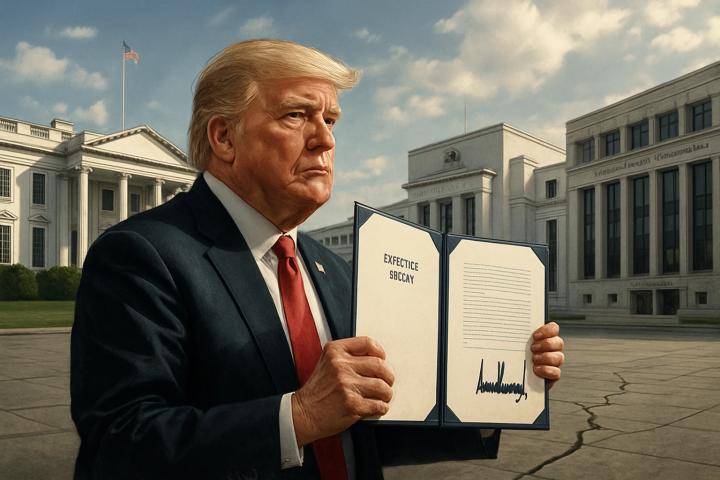San Francisco Federal Reserve Chair Daly warns of weakening job market, with rate cuts becoming a practical option for each upcoming Fed meeting, and market expectations for September rate cuts heating up.
(Previous context: False Prosperity! US July Non-Farm Employment Far Below Expectations, Downward Revision of 258,000 Jobs in May and June, Trump Blasts Powell, Dismisses Labor Bureau Chief )
(Background supplement: Taiwan 20% Tariff》New Taiwan Dollar Breaks 30 Yuan, Creating Two-Month Low, Semiconductor Tariffs Next Week Are the Real Challenge )
Rate cuts may come sooner than expected? On Monday (4th), the usually cautious San Francisco Federal Reserve Chair Mary Daly told media that the US labor market is weakening, and price pressures from tariffs have not yet continued to spread, suggesting the Fed is just a step away from rate cuts.
Rate Cut Signals Becoming Clearer
When discussing last week's decision to maintain the interest rate range at 5.25% to 5.50%, Daly frankly stated that the next step cannot remain on hold for long. She reminded that from now on, "every meeting is a live meeting," and rate cuts will depend on data. When pressed by reporters, she candidly said:
I'm willing to wait another cycle, but I can't wait forever.
In the June dot plot, most policymakers expected two rate cuts this year, each by 0.25 percentage points. Daly reiterated that the path is "still well-calibrated" but added that the key is not whether to cut in September or December, but whether to cut at all. She also believes that if the labor market weakens faster, the number of rate cuts could be more than two.
Fedwatch data predicts that the probability of the Fed cutting rates by one notch in September is as high as 94.4%.

Labor Market Slowing Down
The key to Daly's attitude shift is the latest non-farm report released last Friday, showing only 73,000 new jobs in July, far below the three-year average, with the unemployment rate slightly rising to 4.2%. More worryingly, job growth in May and June was significantly revised downward, indicating that the cooling of labor demand is no longer occasional.
She pointed out that if action is taken only after employment fully weakens, policy transmission would take six months to a year, by which time the damage to the labor market might be irreversible. We know that maintaining price stability and full employment are the Fed's most important dual mandates, and at this stage, they may lean towards protecting the labor market.
Inflation Pressure Temporarily Easing
Regarding market concerns about new tariffs pushing up inflation, Daly believes that the related impact is currently "one-time" and limited in scope. She mentioned that businesses mostly distribute import costs through supply chains, and the service sector shows softening in housing and some service prices, with overall price momentum not spiraling out of control.
Policy Path and Market Pricing
Before the September Fed meeting, two non-farm reports and multiple inflation indicators will be released, and the data will determine the terminal rate level and rate cut pace.
If employment continues to slow and inflation steadily approaches the 2% target, the Fed might increase this year's rate cuts from two to three. Conversely, if prices rise again, the decision-makers reserve the option to pause. With a backdrop of weakening employment and no significant inflation deterioration, rate cuts seem almost certain.
When the Fed pulls the trigger will determine whether the US economy can achieve a soft landing and will also influence the global investment landscape's reshuffling.






